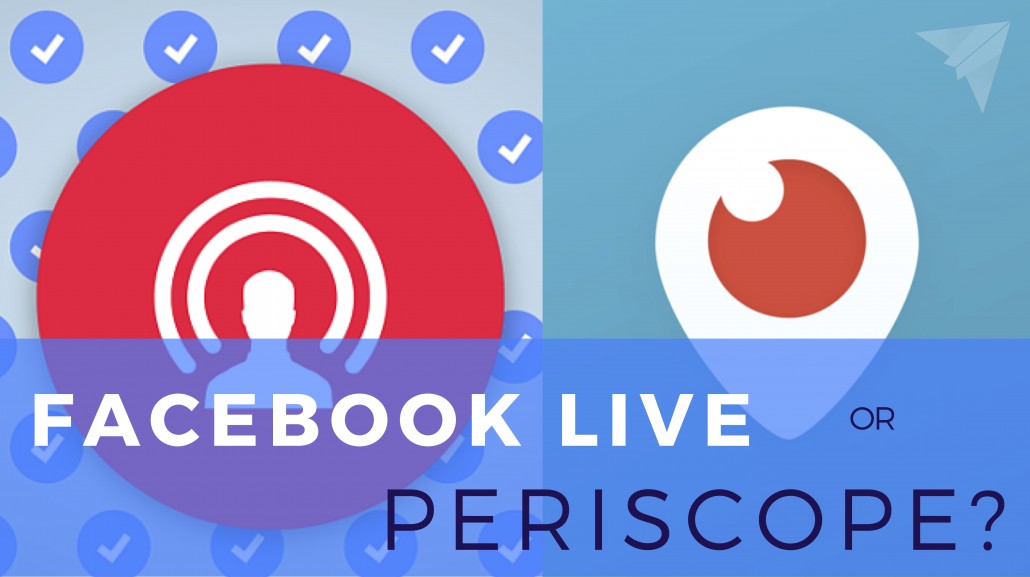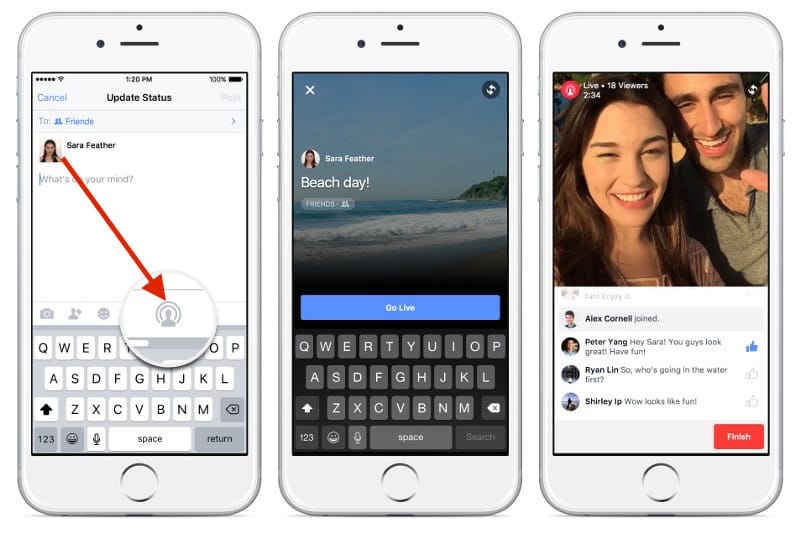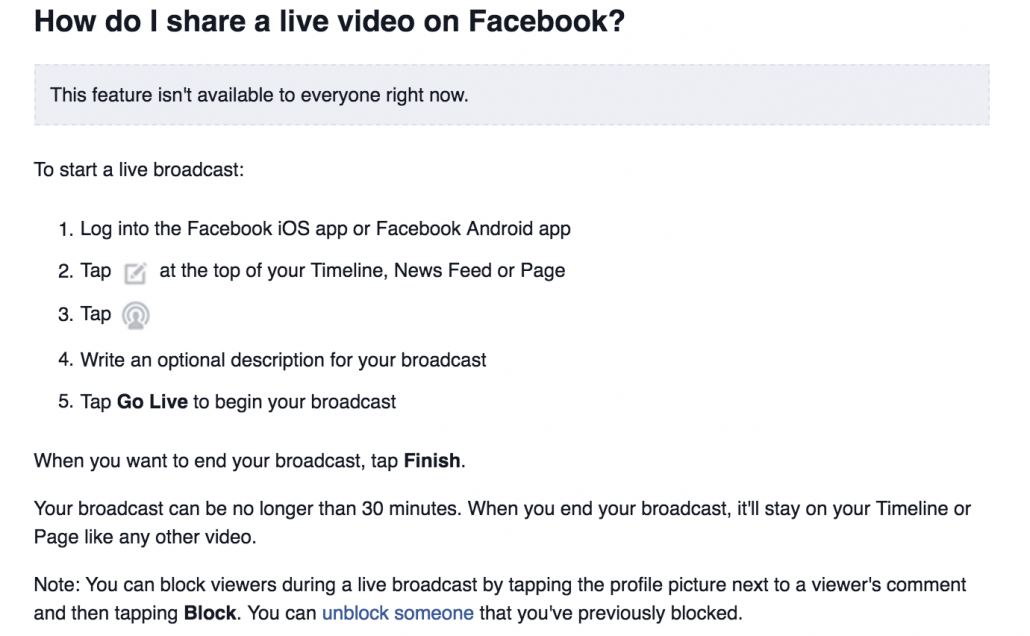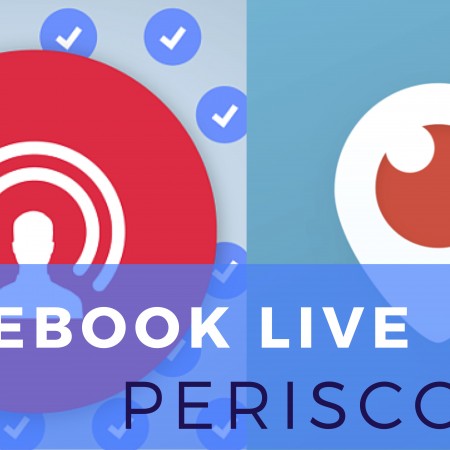“Live-streaming? What the heck is that?”
Well, that totally changed in 2015 when everyone and their brother discovered Periscope and “live-streaming” became a sudden hit – to the tune of millions hitting record. The online marketing community was abuzz about the popularity of Periscope. 10 million users crowded in and started live-streaming the same year it came out (it grew to a million users just 10 days after launch.) Recently, however, Periscope has been the subject of a gradual downfall. There’s a lot of rumored reasons: a lack of communication on Periscope’s part, the bugs in its app that have never been fixed, or the trolls and spam that exists a-plenty in the streams?
As it stands now, Periscope looks like it’s about to be surpassed in terms of popularity by a new, yet powerful live-streaming app from a long-standing social giant: Facebook Live. There’s a very good chance that this new live-stream king may well usurp Periscope off of the throne.
What’s really going down in the battle between the platforms?
Let’s explore.

Is Facebook Live Streaming About to Push Periscope Down the Rabbit Hole?
Periscope is owned by Twitter. Originally, Periscope was launched as an attempt by Twitter to gain more relevance and compete with other popular livestream apps like Meerkat.
According to Hustle, Zuckerburg is going for the throat punch on Jack Dorsey. With all the tremendous power of Facebook, it’s a huge move to open up Facebook Live streaming to the public. And Facebook just did that.
The Verdict on Periscope
While Periscope enjoyed heavy buzz and widespread adoption in its early days (it was even named the best app by Apple in 2015), the app could be seriously deflating. Here’s just a few reasons why it’s on a downward slide:
- DailyMail.co.uk said that it’s a “parent’s worst nightmare”
- Another news site said that with Facebook Live’s launch, and Google offering their own version of live-streaming soon called YouTube Connect, Periscope could die off like Meerkat
- Chalene Johnson, a NYT Bestseller and Top #10 hottest iTunes podcaster with over 12 million podcast downloads and huge early Periscope fan with hundreds of thousands of followers, recently said in a podcast episode that Periscope is letting her down: it has gone too long without telling us why it was constantly freezing, not fixing a lot of issues, cutting down on the spam (trolls and fake accounts)
- The fact that you can watch people snort cocaine, a girl DUI’ing (don’t worry: the cops were called on her since she publicly streamed it), and that spam and trolls thrive and exist in every other live stream, well, to put it simply: that doesn’t bode well for Periscope.
- Spotlight was stolen: For another, Facebook stepped in and stole the spotlight. Facebook Live Stream is an app that the social media giant announced in late 2015 and which has been slowly rolling out over the last several months. Much like Periscope, Facebook Live streaming allows users to share their live videos via the Facebook platform.
Just The Technical Side: Periscope’s 5 Worst Problems
Don’t forget a whole number of technical problems Periscope has (likely some of the largest reasons for the platform’s downward trend):
- Freezing. Anyone who remembers Twitter’s infamous “Fail Whale” episodes might not be shocked by the fact that Periscope was freezing on a regular basis.
- Trolls. According to Business Insider, trolls were one of the most common problems on Periscope. From sexually explicit comments on female users’ profiles to harassment on posts that reached the trending list, many users were driven from Periscope due to bona fide harassment issues. Parents started reporting Periscope to higher authorities when they found their underage kids using Periscope and receiving illicit advances from these trolls. Periscope has came across as a very transparent platform where privacy didn’t really seem like a big deal: you could hit live and broadcast to anyone with very little trouble.
- Fake accounts. Fake accounts went hand in hand with trolling on Periscope and it wasn’t a problem that even the owners of the platform were unfamiliar with. In fact, even CEO Dick Costolo admitted that the platform “sucks” at dealing with fake profiles and abusive users.
- Failed notifications. One of the main reasons to join Periscope was to participate in live broadcasts. Unfortunately, however, many Periscope users simply weren’t getting notifications when live broadcasts came on. What’s more, when these users would report the issues to Periscope itself, the platform couldn’t identify the failed notifications and often had no answers for the users.
- Bugs. Periscope was riddled with bugs that made it freeze, function slowly, and provide a poor user experience. While these bugs may have been simple to fix, Periscope responded slowly or not at all to user inquires.
Now, it would be unfair just to blame Periscope only for the bugs or trolling issues (after all, Facebook has dealt with some of the same problems); the issue is not so much the existence of the bugs as it is Periscope’s apparent unwillingness to deal with them as proactively as they’ve needed to.
While Periscope users have long since been aware of the platform’s bugs and shortcomings, Periscope itself has seemed virtually oblivious or, at the very least, has failed to reach out and talk to its users about what’s going on internally, which is something Facebook has historically done very well.
Perhaps the only plus Periscope does have still going for it, is that Twitter owns it.
And with that kind of backing, I suspect it’ll be a good fight before it totally goes down – Dorsey is going to fight for it. (According to Hustle, their latest move is teaming up with GoPro to offer live streaming straight from GoPro’s cameras.)
Introducing Facebook Live: A Whole New Way to See the World
While Facebook Live streaming and Periscope may look quite similar on the surface, it’s what’s inside that matters. While Periscope is a simple live-stream app that’s connected to Twitter, Facebook Live is a live-streaming app that makes its home on Facebook – which remains the largest social media network in the world.
It used to only be available to celebs, but now it’s available for nearly everyone: just hit the little record button from your profile.


Don’t go live just yet, though…
Hold your horses. Users of Facebook live are warning first-time Facebook Live users that your first 45 seconds going live is “make and break time” (podcast from Chalene Johnson again: her first live stream got 250+ shares). Your first time going live sends an actual notification to every last person on your friends or subscribers list–and announces that you’re going live in 3, 2, 1… It’s a big deal and a lot of publicity for you, for free.

So yeah, make that first one count. (That’s why I haven’t done mine yet; and per the Twitter chats I’m in, a lot of marketers haven’t either for this very good reason. You have to do it right.)
4 Good Reasons to Use Facebook Live Streaming Right Now
If you can get over doing your first live FB stream, here are some really, really good reasons to start using Facebook Live:
1. You can target your viewers
Facebook allows targeting. This is huge in potentially beating out Periscope, because Periscope has limited functionality there. But with FB Live, you get all the power of their demographic and people targeting capabilities. If you do Facebook ads, you’ll absolutely want to try FB Live.
2. It’s easy and available for nearly everyone
As it stands now, Facebook Live streaming works quite a lot like Facebook Messenger, meaning that there is a live video button at the bottom of the screen that users simply can click to share their live video broadcasts. (This rolled out early 2016 and is available to nearly everyone now.)
3. It’s huge for interaction and engagement
Facebook Live encourages a LOT of interaction. So much so, that Facebook says people comment “10x more during a live video than a regular video.” That’s 1000% more interaction for any of your non-live, shared videos! In addition to allowing users to showcase their broadcasts, the livestream app will also allow users to follow specific topics, like current events and science, and receive updates every time a video is posted in a certain category. Additionally, people viewing live videos on Facebook Live will be able to invite their friends to hop in on the same video (invited people will receive a push notification alerting them). Viewers will also be able to view Facebook’s new “Reactions” feature in the form of floating icons across the screen, much like Periscope’s floating hearts feature. The introduction of Facebook Live Stream is just one more notch on Facebook’s belt of video-focused innovation, following hot on the heels of the introduction of autoplay into news feeds.
4. Accessibility
In addition to higher levels of functionality and a larger user base, one of the distinct advantages that Facebook Live has over Periscope is accessibility. Contrary to what many marketers and app developers believe, everyday mobile users aren’t often completely up to date on the latest apps and, because of this, they’re more willing to use one app that covers all of their needs – from social media updates to live streaming. Facebook, increasingly, has emerged to fill this position. Because Facebook already has such a huge base of users, the platform is already in a better position to become a leader in live-streaming technology. The average U.S. user spends about 40 minutes each day on Facebook, which means that users who are already on the app are more likely to use the same app for all of their live streaming needs.
What’s more, this is a development that has the potential to boast widespread impact across various groups of users, including business and personal users.
One Big Reason Facebook Is Going to Win
Still not assured?
Get ready, I’m going to blow your mind. Ready for this?
In ONE quarter of 2015, Facebook added more daily active users in the U.S. alone than Twitter added in a month globally.
BAM. That’s a lot more people and power on the Facebook platform, vs. Twitter.
Which potential audience would you rather reach?
So, my verdict:
Consider using Facebook Live.
While Periscope has been a helpful tool for many marketers, the fact of the matter is that Facebook simply seems to be prioritizing live streaming videos more than Twitter.
Facebook Live’s users (including Chalene Johnson) consistently report that the platform feels quieter and more personal and that it’s easier to pull better numbers through Facebook Live videos than it is through Periscope videos.
While it’s inevitable that apps will develop bugs every once in awhile, the fact that Periscope has consistently failed to communicate these things to its users has been a bane for many onetime fans of the app.
Conclusion
At the end of the day, while Periscope and Facebook Live share similar visions and interfaces, the fact of the matter is that the team at Facebook Live has simply executed its vision more effectively. While both apps offer live streaming, only one of them places its users at the forefront and creates a quiet space that actually achieves the original purpose of the project: to engage people in conversation. It seems as if Facebook Live is about to take over Periscope. But, only time will tell.
What are your thoughts? Comment below!

